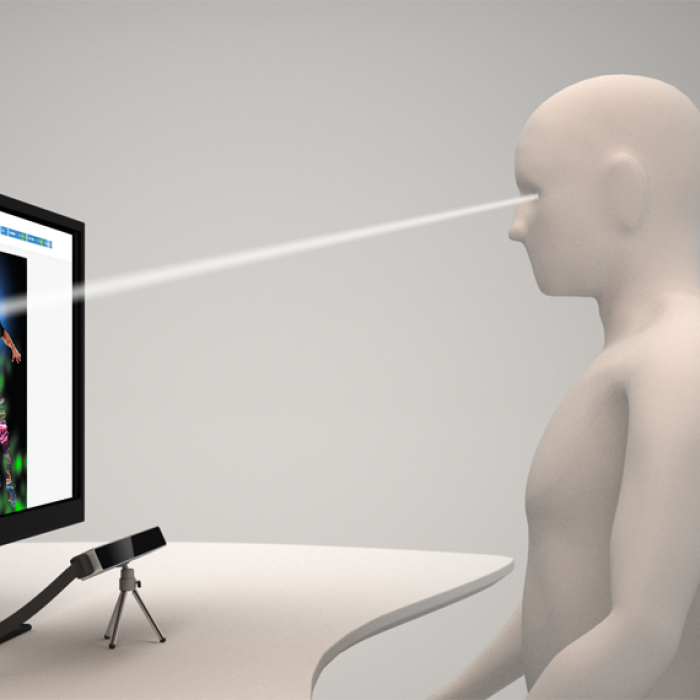
All You Need To Know: Eye Tracking
What grabs our attention? How do we react to certain visual imagery? Why is certain imagery more appealing than others? Eye-tracking allows you to understand the reasons behind these actions.
We spend the majority of our time in front of a screen – but what are we really looking at?
Screen-based eye tracking measures & analyses visual attention to almost any form of digital experience and multimedia.
Perform screen-based Eye Tracking on images, videos, websites, games, software interfaces, 3D environments, mobile phones and more to provide deeper insights into eye movements and visual attention.

Leading consumer brands use eye tracking to better understand customer experience and product performance by measuring visual attention to key messages in product advertisements, placement and branding, package design, and more.
Are key pieces of information, messaging or artefacts receiving the required amount of visual attention within the ad?
How effectively is your User Experience (UX) and Customer Experience (CX) designed to support users.
Is your store designed to enhance the experience of retail shoppers? How easy is it for them to navigate their way through different areas of the store?
Why do people make certain decisions? Eye Tracking is a powerful tool in understanding the decision making process and strong indicators for consumer behaviour
Gaze Mapping creates a representation of visual attention either individually or across a group.
They can be represented as either static images or dynamic videos, allowing you to understand what sequence people attend to specific pieces of information contained in a visual experience.
Heatmaps are visualisations that demonstrate the general distribution of gaze points. They are typically displayed as a colour gradient overlaid across the visual scene. The red, yellow, and green colours represent in descending order of the volume of gaze points that were directed towards different areas of the scene.
Using a heatmap is a straightforward method to quickly visualize which elements attract more attention than others. Heatmaps can be compared across single respondents as well as groups of participants, which can be helpful in understanding how different populations might view a stimulus in alternative ways.
An Area of Interest (AOI), is a tool to segment regions of a displayed stimulus, and extract metrics specifically for those regions. While not strictly a metric by itself, it defines the area by which crucial Eye Tracking metrics are calculated.
For example, if you show a picture of a person, it is possible to draw separate AOIs around the body and the face. You will then be able to display metrics for each region separately, like how long did it take for someone to look at a specific region, the length of time respondents spent in the region, how many fixations occurred within the region, how many returned to the region.
Here you can find some of the questions we are asked about Screen Based Eye Tracking on a regular basis.
If you have questions you cannot find here, or elsewhere on our website, please contact us by clicking on the button below.
Screen-based eye tracking tracks the movements of the eye in response to a given stimulus on a screen. It records and analyses visual attention in response to different experiences across multimedia.
It’s possible to perform screen-based eye tracking on images, videos, websites, games, software interfaces, 3D environments and mobile phones to provide deeper insights into visual attention.
Near-infrared light is directed towards the pupil, creating detectable reflections in both the pupil and the cornea. These reflections. The vector between the cornea & pupil are then tracked by an infrared camera.
Screen-based Eye Trackers require respondents to sit in front of a monitor and interact with screen-based content.
Screen-Based Eye Tracking can be used for all experiences that take place on a screen, whether that is desktop, mobile or TV based.
The Stimuli that be used can include images, videos, websites, gaming consoles and UX/UI.
Yes, but it is important to note that Webcam Eye Trackers are not as precise as screen-based Eye Trackers.
For studies that require a high level high degree of precision, it is recommended to use screen based Eye Trackers.

What grabs our attention? How do we react to certain visual imagery? Why is certain imagery more appealing than others? Eye-tracking allows you to understand the reasons behind these actions.

In this piece, we break down any seemingly complicated barriers that exist in the field and present tangible examples relating to areas of application.
